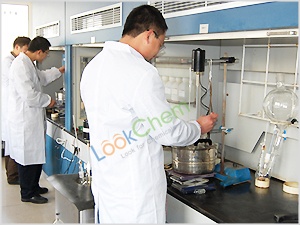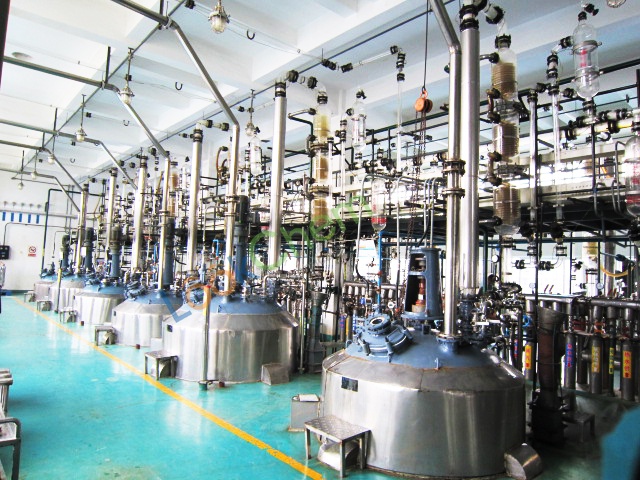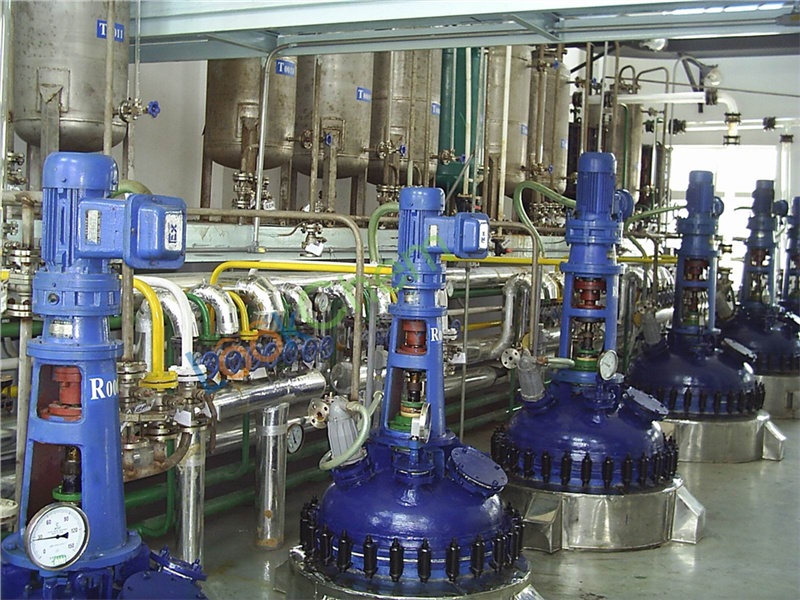2-(2-Hydroxyethoxy)phenol msds
- Product Details
- Company Profile
The following MSDS detailed information are provided by Nanjing Aily Biotechnology Co., Ltd, one specialized 2-(2-Hydroxyethoxy)phenol supplier in China.
1. IDENTIFICATION OF THE SUBSTANCE/MIXTURE AND OF THE COMPANY/UNDERTAKING
Warning
Causes skin irritation.
Causes serious eye irritation.
May cause respiratory irritation.
Avoid breathing dust/ fume/ gas/ mist/ vapours/ spray.
IF IN EYES: Rinse cautiously with water for several minutes. Remove
contact lenses, if present and easy to do. Continue rinsing.
Supplemental Hazard
Statements
According to European Directive 67/548/EEC as amended.
Hazard symbol(s)
R-phrase(s)
R36/37/38
S-phrase(s)
S26
S37/39
Irritating to eyes, respiratory system and skin.
In case of contact with eyes, rinse immediately with plenty of water and seek medical advice.
Wear suitable gloves and eye/face protection.
2. Other hazards
COMPOSITION/INFORMATION ON INGREDIENTS
Substances
Formula: C8H10O3
Molecular Weight: 154,16 g/mol
3. FIRST AID MEASURES
Description of first aid measures
General advice
Consult a physician. Show this safety data sheet to the doctor in attendance.
If inhaled
If breathed in, move person into fresh air. If not breathing, give artificial respiration. Consult a physician.
In case of skin contact
Wash off with soap and plenty of water. Consult a physician.
In case of eye contact
Rinse thoroughly with plenty of water for at least 15 minutes and consult a physician.
If swallowed
Never give anything by mouth to an unconscious person. Rinse mouth with water. Consult a physician.
Most important symptoms and effects, both acute and delayed
Depending on the intensity and duration of exposure, effects may vary from mild irritation to severe destruction of tissue., prolonged or repeated exposure can cause:, Damage to the eyes., To the best of our knowledge, the chemical, physical, and toxicological properties have not been thoroughly investigated.
Indication of immediate medical attention and special treatment needed no data available
FIRE-FIGHTING MEASURES
Extinguishing media
Suitable extinguishing media
Use water spray, alcohol-resistant foam, dry chemical or carbon dioxide.
Special hazards arising from the substance or mixture
Carbon oxides
Precautions for fire-fighters
Wear self contained breathing apparatus for fire fighting if necessary.
Further information no data available
4. ACCIDENTAL RELEASE MEASURES
Personal precautions, protective equipment and emergency procedures
Use personal protective equipment. Avoid dust formation. Avoid breathing vapors, mist or gas. Ensure adequate ventilation. Evacuate personnel to safe areas. Avoid breathing dust.
Environmental precautions
Do not let product enter drains.
Methods and materials for containment and cleaning up
Pick up and arrange disposal without creating dust. Sweep up and shovel. Keep in suitable, closed containers for disposal.
Reference to other sections
For disposal see section
5. HANDLING AND STORAGE
Precautions for safe handling
Avoid contact with skin and eyes. Avoid formation of dust and aerosols.
Provide appropriate exhaust ventilation at places where dust is formed.Normal measures for preventive fire protection.
Conditions for safe storage, including any incompatibilities
Store in cool place. Keep container tightly closed in a dry and well-ventilated place.
Specific end uses: no data available
6. EXPOSURE CONTROLS/PERSONAL PROTECTION
Control parameters
Components with workplace control parameters
Exposure controls
Appropriate engineering controls
Handle in accordance with good industrial hygiene and safety practice. Wash hands before breaks and at the end of workday.
Personal protective equipment
Eye/face protection
Safety glasses with side-shields conforming to EN166 Use equipment for eye protection tested and approved under appropriate government standards such as NIOSH (US) or EN 166(EU).
Skin protection
Handle with gloves. Gloves must be inspected prior to use. Use proper glove removal technique
(without touching glove's outer surface) to avoid skin contact with this product. Dispose of contaminated gloves after use in accordance with applicable laws and good laboratory practices.
Wash and dry hands.
The selected protective gloves have to satisfy the specifications of EU Directive 89/686/EEC and the standard EN 374 derived from it.
Body Protection impervious clothing, The type of protective equipment must be selected according to the concentration and amount of the dangerous substance at the specific workplace.
Respiratory protection
For nuisance exposures use type P95 (US) or type P1 (EU EN 143) particle respirator.For higher level protection use type OV/AG/P99 (US) or type ABEK-P2 (EU EN 143) respirator cartridges. Use respirators and components tested and approved under appropriate government standards such as
NIOSH (US) or CEN (EU).
PHYSICAL AND CHEMICAL PROPERTIES
7. Information on basic physical and chemical properties
Appearance: Odour
Melting/freezing point: no data available
Initial boiling point and boiling range
Flash point: no data available
Evaporation rate: no data available
Form: powder
Colour: tan
Melting point/range: 99 - 100 °C - lit. 128 °C at 0,9 hPa - lit.
Incompatible materials
Strong oxidizing agents, Strong bases
Hazardous decomposition products
Other decomposition products - no data available
8. TOXICOLOGICAL INFORMATION
Information on toxicological effects
Acute toxicity
no data available
Skin corrosion/irritation
no data available
Serious eye damage/eye irritation
no data available
Respiratory or skin sensitization
no data available
Germ cell mutagenicity
no data available
Carcinogenicity
9. IARC:
No component of this product present at levels greater than or equal to 0.1% is identified as probable, possible or confirmed human carcinogen by IARC.
Reproductive toxicity
no data available
Specific target organ toxicity - single exposure
Inhalation - May cause respiratory irritation.
Specific target organ toxicity - repeated exposure
no data available
Aspiration hazard
no data available
Potential health effects
Inhalation
Ingestion
Skin
Eyes
May be harmful if inhaled. Causes respiratory tract irritation.
May be harmful if swallowed.
May be harmful if absorbed through skin. Causes skin irritation.
Causes serious eye irritation.
10. Signs and Symptoms of Exposure
Depending on the intensity and duration of exposure, effects may vary from mild irritation to severe
destruction of tissue., prolonged or repeated exposure can cause:, Damage to the eyes., To the best of our
knowledge, the chemical, physical, and toxicological properties have not been thoroughly investigated.
Additional Information
RTECS: Not available
Results of PBT and vPvB assessment
no data available
Other adverse effects
no data available
11. DISPOSAL CONSIDERATIONS
Waste treatment methods
Product
Offer surplus and non-recyclable solutions to a licensed disposal company. Contact a licensed professional
waste disposal service to dispose of this material. Dissolve or mix the material with a combustible solvent
and burn in a chemical incinerator equipped with an afterburner and scrubber.
Contaminated packaging
Dispose of as unused product.
12. ADR/RID: -
UN proper shipping name
ADR/RID:
Not dangerous goods
IMDG:
Not dangerous goods
IATA:
Not dangerous goods
Transport hazard class(es)
ADR/RID: -
Packaging group
ADR/RID: -
Environmental hazards
ADR/RID: no
Special precautions for users
no data available
Safety, health and environmental regulations/legislation specific for the substance or mixture
no data available
Chemical Safety Assessment
no data available
Verified Supplier
NANJING AILY BIOTECHNOLOGY CO.,LTD
- Country:
 China (Mainland)
China (Mainland) - Business type: Lab/Research institutions
- Integral:


Contact Details|Similar Products

Escrow ServiceMore
Secure Your Orders With escrow More Transparency,Less Uncertainty


 Add to inquiry cart
Add to inquiry cart



